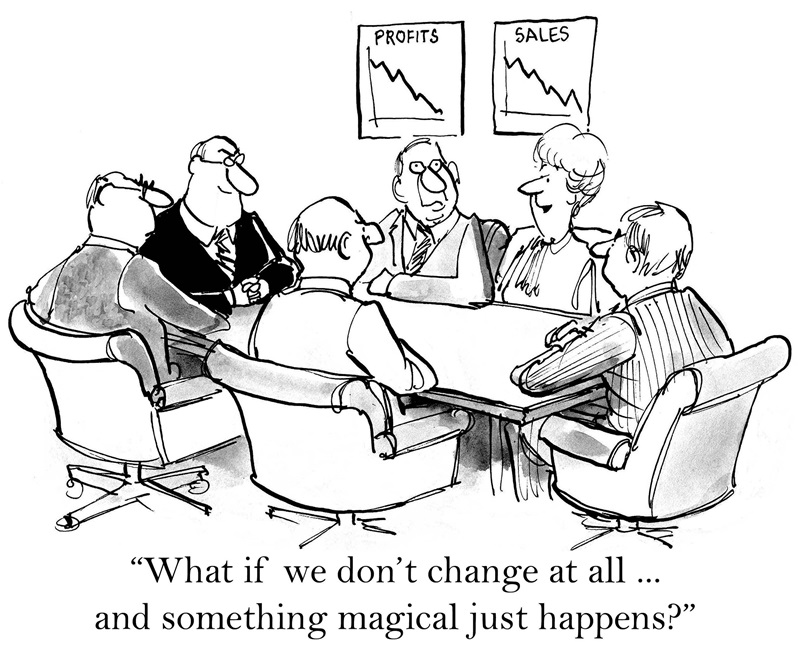Strategic planning is a crucial process for any organization aiming to achieve long-term success. However, when not done right, we often see a result of wasted time and resources. But perhaps the most costly part of not doing strategic planning right are the missed opportunities.
Over the years our team has worked with many different companies – of many sizes and from a wide range of industries – and we’ve identified what we consider the five worst practices in strategic planning.
Read on, so you can avoid these mistakes.
1. The Disengaged CEO: Top-Down Direction Without Employee Input
One of the most detrimental approaches to strategic planning is when a CEO fails to engage company employees and instead provides top-down direction throughout the process. An autocratic style not only stifles creativity and innovation – but also leads to a lack of buy-in from the very people responsible for executing the plan.
When employees are excluded from the planning process – or don’t have their input taken seriously – they often feel disconnected from the company’s goals and may struggle to understand their role in achieving them. This will result in reduced motivation, lower productivity, and increased resistance to change. And remember, those on the front line of a company often have incredibly valuable insight and a needed perspective. If their voice is not heard, the strategy developed will be out of touch with operational realities, and there will not be a sense of ownership and commitment among team members.
The fix: CEOs must ensure their company has an inclusive environment – and during the strategic planning process, employees at all levels must be encouraged to contribute their ideas and feedback.
2. DIY Facilitation: It Just Doesn’t Work
Another common mistake we’ve observed: companies attempt to moderate and run strategic planning sessions themselves instead of bringing in an outside (read: trained, skilled) facilitator. While it may seem cost-effective to take a DIY approach, this often leads to suboptimal results and a strategic plan that doesn’t cover all the areas it should.
And keep in mind that internal facilitators, no matter how skilled, typically lack the objectivity and neutrality required to guide discussions effectively. They may inadvertently steer conversations based on their own biases or existing power dynamics within the organization. Internal facilitators often struggle to challenge long-held assumptions or ask difficult questions that an external expert would be comfortable tossing out to participants.
The fix: Companies should tap into an experienced outside facilitator to bring a fresh perspective, specialized expertise, discussion management capabilities (meaning someone who can keep the discussion on track), and objectivity. Importantly, this person will ensure that all voices are heard, and that true alignment of all functional leaders takes place. As well, this individual will help ensure the planning session concludes successfully with actionable, measurable plans.
3. Flying Blind: Lack of Metrics and KPIs
A strategic plan without proper metrics and Key Performance Indicators (KPIs) is like taking a trip without a map or GPS, or hiking in the wilderness without a compass. We’ve seen numerous organizations invest time and resources into developing strategic plans, only to not have the plan drive needed results due to a lack of clear, measurable objectives.
Without well-defined metrics and KPIs, it becomes nearly impossible to track progress. It also makes it incredibly hard to identify areas for improvement or make data-driven decisions. No quantifiable goals means ambiguity in terms of performance evaluation, and results in a disconnect between strategic objectives and day-to-day operations. An important step in the process is to develop a dashboard to regularly (and succinctly) communicate performance as it compares to plan and expectations.
The fix: Organizations must establish a relevant set of metrics and KPIs that align with strategic goals. These should be specific, measurable, achievable, relevant, and time-bound (yes, we are all familiar with SMART). Regular monitoring and reporting of these metrics will ensure the organization stays on course and can make timely adjustments when necessary: consider setting a cadence to review performance monthly, quarterly, and annually.
4. For the Love of Tactics: When Strategic Planning Isn’t Strategic
One of the most frustrating scenarios we encounter is when strategic planning sessions devolve into discussions about day-to-day operations rather than focusing on long-term, big-picture thinking. This “tactical myopia” results in plans that are merely extensions of current activities. These, to be blunt, are NOT strategic plans.
Strategic planning is about envisioning the future. It identifies opportunities for growth and innovation, and will help a team make important decisions that will shape the organization’s direction for years to come. Strategic planning sessions should NOT get bogged down in operational details, as when they do, they fail to address critical questions that drive long-term success.
The fix: Establish clear guidelines for strategic discussions, and the facilitator must ensure that participants understand the difference between strategic and tactical thinking (and reroute the discussion when needed). Participants MUST be guided to think beyond immediate challenges and consider broader market trends, emerging technologies, and potential disruptors.
5. The Absence of Planning: When Strategic Planning Doesn’t Happen at All
Perhaps the most egregious error we’ve witnessed is when organizations neglect strategic planning altogether. In these cases, we find that some companies operate under the (misguided) belief that they can succeed through reactive decision-making alone, without a clear long-term vision or plan.
When there is no strategic planning, there is a lack of direction from the leadership, there are missed opportunities, and there is an inefficient use of resources. Organizations without a strategic plan are more likely to be caught off guard by market changes and will struggle to adapt to new challenges.
The fix: This one is simple – leadership must recognize the critical importance of strategic planning and make it a priority. It should not only include the development of the strategic plan, but the communication of the plan throughout the organization with a commitment to regular reviews and updates.
When done correctly (and when done!) strategic planning is a process that will propel an organization toward its goals and work to ensure long-term success. By avoiding these five common pitfalls – disengaged leadership, internal facilitation, lack of metrics, tactical myopia, and the absence of planning altogether – companies can develop robust, actionable strategies that drive growth and innovation … and success.
Want to find out more insight about how to best plan for the year ahead? Need help turning a plan into execution? Or do you have questions on how to best conduct your strategic planning session? Reach out to us via email at hello@thinkempirical.com, or give us a call (610) 994-1139.
This blog was penned by two Empirical Partners: Christopher Lee, Managing Partner, and Jonathan Peters, Senior Partner. Be sure to connect with both on LinkedIn!



